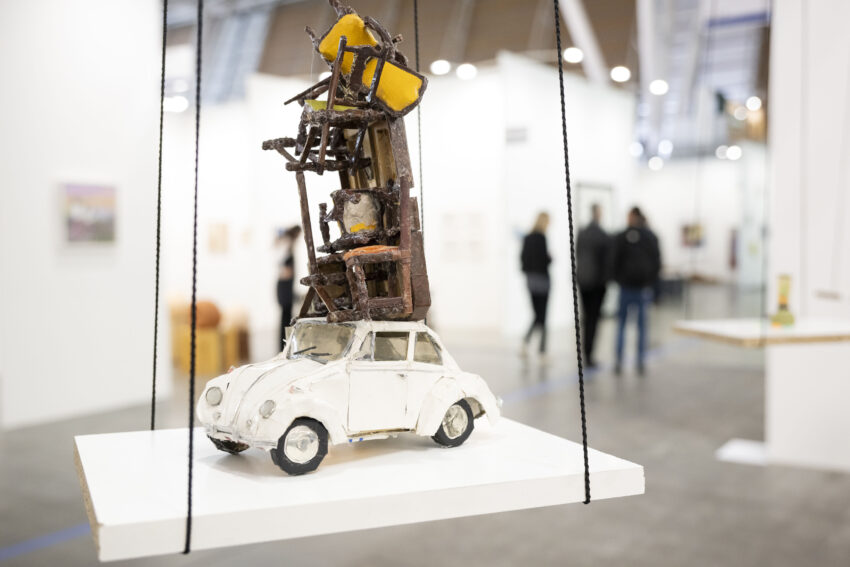Artissima featured works by prominent artists such as Giovanni Anselmo (€10,000–400,000), Giulio Paolini (€10,000–70,000), and Mario Merz (€40,000–400,000), including his emblematic Fibonacci series. Paolo Biasutti noted that during Turin’s art week there were “good vibrations,” adding that “Turin is a city with a magic.” He emphasized, “With all the difficulties of the moment, we have to overcome things, and [the fair] is a way to overcome things.”
The gallery also participates in Bologna’s Arte Fiera, although Biasutti admitted it draws a more national crowd. More international in scope was Thomas Dane Gallery, which also shows annually at Frieze and Art Basel. Senior director Federica Sheehan told Observer that the gallery, which participated in Artissima from 2010 to 2012, returned in 2023 after opening a Naples location in 2018.
“We’ve noticed an increase in foreign visitors,” she said of this edition.
The nearby Pinacoteca Agnelli presented a work by one of the gallery’s artists, Paul Pfeiffer, who realized a project on the Pista 500 billboard in collaboration with Artissima. Pfeiffer’s work at the booth featured a deconstructed Justin Bieber body, which became “the most photographed work of the booth. Maybe of the fair,” Sheehan noted, highlighting its focus on “religion and pop media at the same time.”
Still, photographs by Luigi Ghirri (€11,000) sold first and briskly during the preview day.
Among the New Entries section, which featured 12 emerging international galleries with less than five years of activity, was PİLEVNELİ—founded by Murat Pilevneli in 2017 in Istanbul’s Dolapdere district—appearing for the first time with work by Bora Akıncıtürk (€6,000–€10,000). Pilevneli admitted to being new to the Turin scene but observed that “in the end, all fairs are very similar. The only change is some are more local and some are international.” He described Turin as being on the “local” side of the spectrum but was pleased to encounter Turkish collectors.
Akıncıtürk, meanwhile, played with the notion of the fair itself, noting that “conceptually, today’s fairs are generally this dystopian ecological hypercapitalist [thing].” His work, drawn from found online images, takes a “Pop Art-y, kinda flashy colorful” approach—depicting, in this instance, a pair of glimmering secondhand Margiela boots from Vinted and a lesbian pornstar-turned-activist. “I think [the work] touches on the market because it is especially about late-stage capitalism,” he added.
For more insights, explore additional reports on art fairs, biennials, and triennials.
https://observer.com/2025/11/market-artissima-art-fair-report-turin-italy/
